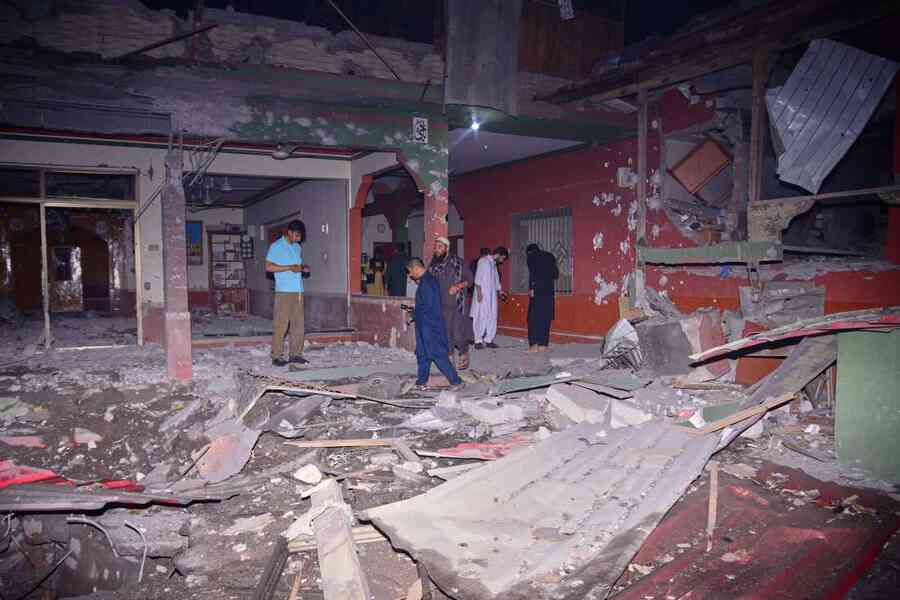India’s Missile Strike Ignites Pakistan Fury
May 7, 2025: India’s missile attacks on Pakistan-administered territories spark outrage, civilian casualties, and fears of nuclear escalation. World Snap unpacks verified truths.

At 2:30 AM on May 7, 2025, the skies over Pakistan-administered Kashmir and Punjab lit up. India launched missile strikes targeting nine sites, including Kotli, Bahawalpur, and Muzaffarabad, killing at least three civilians, including a child, and wounding two others, according to Pakistani security officials. The Indian Ministry of Defence dubbed it “Operation Sindoor,” claiming the strikes hit “terrorist infrastructure” linked to attacks on India.
Pakistan’s Foreign Affairs Ministry condemned the attack as a “cowardly act,” asserting no military targets were hit. Witnesses reported chaos near Muzaffarabad, with damaged buildings and panicked residents fleeing. “It was like an earthquake,” one local told Reuters. No Indian aircraft crossed into Pakistani airspace; the missiles were fired from Indian territory, per Lt. Gen. Ahmad Sharif, Pakistani army spokesman.
Roots of Rage
The strikes follow a deadly April 22, 2025, terrorist attack in Pahalgam, Jammu and Kashmir, where 26 people, mostly Hindu tourists, were killed. India blames Pakistan for backing the militants, a charge Islamabad denies. Tensions have simmered since, with both nations expelling diplomats, closing borders, and suspending trade. India also halted the Indus Waters Treaty, escalating economic pressure.
On May 3, Pakistan test-fired two missiles—Fatah (120 km range) and Abdali (450 km range)—to signal readiness. India called it “provocative.” Days later, India’s navy tested anti-ship missiles, flexing its own muscle. The missile exchange marks the worst fighting since a 2019 skirmish nearly spiraled out of control.
Civilian Toll
Waqar Noor, interior minister of Pakistan-administered Kashmir, confirmed a child’s death in Kotli. In Bahawalpur, a woman was hospitalized with shrapnel wounds, per AP News. Photos show a damaged building in Muzaffarabad, with locals sifting through rubble. Pakistan’s Foreign Affairs Ministry warned the strikes threatened commercial air traffic, prompting Air France and Lufthansa to avoid Pakistani airspace.
India’s statement claimed “restraint” in target selection, avoiding Pakistani military sites. Yet, civilian casualties have fueled outrage. “This is an attack on our people,” Noor told ARY News. Pakistan vows retaliation, with its military on high alert.

Global Eyes on Nuclear Rivals
India and Pakistan, both nuclear-armed, have fought three wars since 1947, largely over Kashmir. The current crisis has drawn international concern. The U.S. urged de-escalation, while Moody’s Ratings warned Pakistan’s forex reserves could face pressure if tensions persist. Pakistan plans to raise the issue at the UN Security Council, demanding action to maintain “international peace.”
On X, verified accounts like @ANI reported India’s strikes as a response to “terrorist infrastructure.” Buzz on the platform reflects polarized sentiment, with some Indian users praising the action and Pakistani users decrying civilian losses. “This is justice for Pahalgam,” one post read, while another called it “an act of war.”
What It Means Now
The immediate fallout is stark. Civilian deaths have inflamed Pakistan’s public, potentially forcing its military to retaliate. India’s suspension of the Indus Waters Treaty threatens Pakistan’s water supply, a move analysts call “economic warfare.” Airspace closures disrupt global travel, with ripple effects on trade.
Militarily, both sides are poised for escalation. Pakistan’s Shaheen-III missile (2,750 km range) can reach all of India, while India’s S-400 systems bolster its air defenses. A prolonged conflict risks drawing in allies—China for Pakistan, the U.S. and Russia for India—per Reuters. Economically, Pakistan faces greater strain, with limited reserves compared to India’s robust resources.
Politically, India’s Prime Minister Narendra Modi faces pressure to appear strong ahead of domestic elections, while Pakistan’s army chief, Gen. Syed Asim Munir, uses the crisis to rally support amid economic woes. Neither side shows signs of backing down, raising fears of a miscalculation.
Voices from the Ground
In Muzaffarabad, residents described terror as missiles struck. “We thought it was the end,” a shopkeeper told Al Jazeera. In India, Pahalgam’s scars remain fresh. “Those tourists were innocent,” a Srinagar local said, justifying India’s response. Verified X posts from @BBCBreaking noted Pakistan’s vow to “respond decisively,” amplifying global unease.
History’s Shadow
The Kashmir dispute, dating to 1947, fuels this fire. India controls two-thirds of the region, Pakistan the rest. Both claim it entirely, with periodic clashes along the Line of Control (LoC). The April 22 attack, linked to Pakistan-based militants by India, echoed past incidents like the 2019 Pulwama attack, which prompted Indian airstrikes. Pakistan’s denial of involvement mirrors its stance then.
In 2019, U.S. mediation cooled tensions. Today, no such intervention is confirmed, and both nations’ upgraded arsenals—India’s naval mines, Pakistan’s MIRV-capable Ababeel missile—raise stakes. Experts warn even a limited conflict could escalate fast.
What’s Next?
Pakistan’s planned UN appeal may seek sanctions or condemnation of India, though vetoes by India’s allies like the U.S. could stall action. India justifies its strikes under self-defense, citing Article 51 of the UN Charter. Meanwhile, small-arms fire along the LoC continues, per Reuters, signaling no immediate calm.
Analysts like Ajay Bisaria, former Indian high commissioner to Pakistan, stress “speed, surprise, and secrecy” for successful operations, warning public mood shouldn’t dictate war. Yet, domestic pressures in both nations could force escalation. Sushant Sareen, a strategic expert, told NDTV a full-scale war would bring “massive costs,” with cities vulnerable to missile barrages.
Global Ripples
The crisis affects more than South Asia. China, Pakistan’s ally, may bolster its support, while India’s ties with the U.S. and Russia give it diplomatic heft. The U.S., eyeing China’s J-10 jets in Pakistan, watches closely for combat data, per Reuters. Disruptions to air routes and trade could hit global markets, with oil prices already jittery.
Moody’s notes Pakistan’s economy, already fragile, could buckle under prolonged conflict, while India’s deeper reserves offer resilience. Still, a wider war would strain both, with global supply chains at risk.
Stay Sharp
The India-Pakistan clash teeters on a knife’s edge. With civilian blood spilled and nuclear arsenals in play, the world watches, breathless. Stay sharp with Ongoing Now 24.





